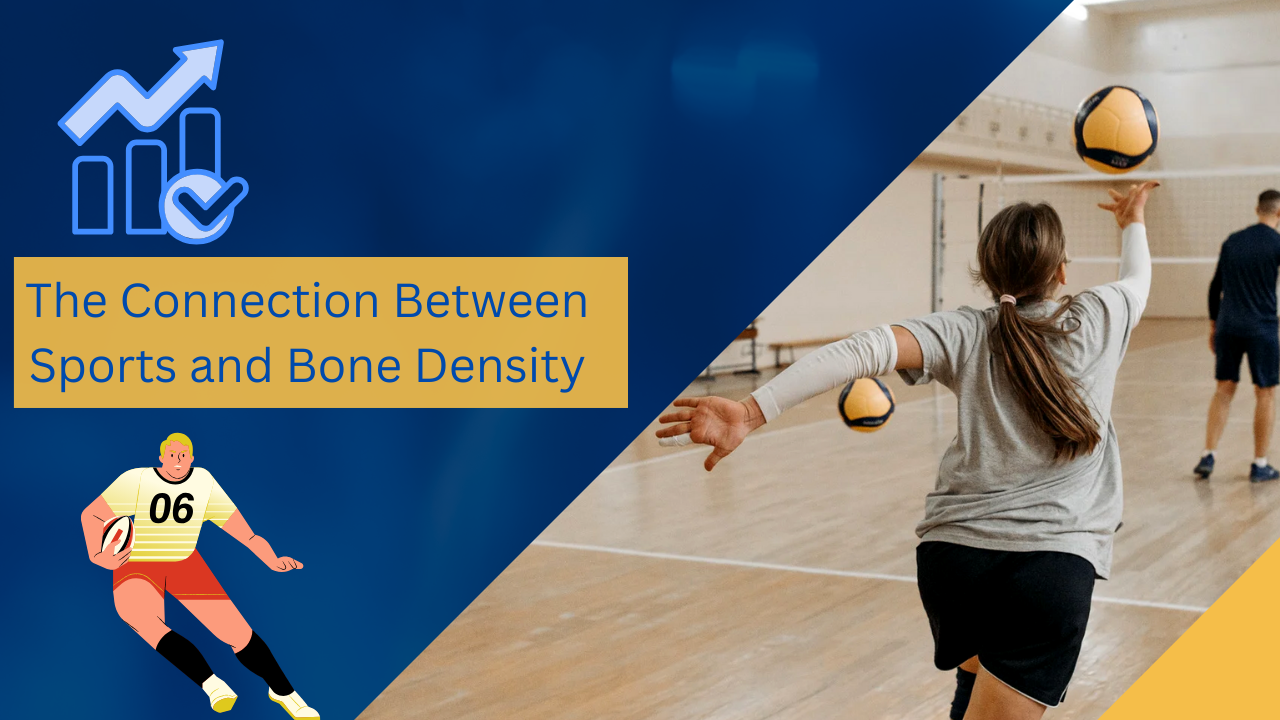Introduction: How Does Sports Impact Bone Density?
Imagine jumping up to catch a basketball or sprinting to the finish line—what happens inside your body during these movements? Every step, jump, and impact sends signals to your bones, telling them to get stronger.
Bones are living, dynamic tissues that constantly change throughout life. Just like muscles, they need stimulation to remain strong and healthy. Sports and weight-bearing activities challenge bones, leading to increased density and reduced risk of fractures.
But how exactly does this process work? Why do some sports benefit bone health more than others? And what steps can you take to keep your bones strong at any age?
In this article, we’ll explore the scientific connection between sports and bone density, uncover the best sports for improving bone strength, and provide actionable tips to maintain healthy bones for life.
What Is Bone Density and Why Is It Important?
Understanding Bone Density
Bone density refers to the amount of minerals (mainly calcium and phosphorus) packed into your bones. The higher the density, the stronger and less likely the bones are to fracture.
Bone density is usually measured through a DEXA scan (Dual-Energy X-ray Absorptiometry), which provides a score indicating bone strength. Low bone density can lead to osteopenia or osteoporosis, conditions that weaken bones and increase fracture risk.
Why Maintaining Bone Density Matters

Strong bones are essential for:
✅ Preventing fractures – Especially in older adults who are more prone to falls.
✅ Supporting overall mobility – Weak bones can lead to reduced movement and chronic pain.
✅ Reducing osteoporosis risk – A common condition in older adults, particularly postmenopausal women.
✅ Enhancing athletic performance – Stronger bones improve endurance, power, and agility.
Bone density naturally peaks around age 30 and gradually declines. Without proper care, bones weaken over time, leading to higher injury risks and limited mobility.
How Sports Help Improve Bone Density
Not all sports have the same impact on bone health. Some activities are highly beneficial, while others offer limited benefits.
1. High-Impact Sports (Most Effective for Bone Density)

These activities involve repetitive ground impact, which stimulates bone growth.
🏀 Basketball – Jumping and sprinting strengthen leg and hip bones.
⚽ Soccer – Rapid movements and weight shifts improve bone structure.
🎾 Tennis – The force from swinging the racket enhances arm and spine density.
🏃 Running/Jogging – Consistent impact encourages bone strengthening.
🥋 Martial Arts – Kicking and striking involve whole-body bone engagement.
📌 Best for: Young adults and teenagers looking to maximize peak bone mass.
2. Strength Training (Key for Maintaining Bone Mass)
Lifting weights applies direct stress on bones, signaling them to grow stronger.
🏋️ Weightlifting – Increases bone mineral density (BMD), particularly in the spine and legs.
🦵 Resistance Band Training – Helps improve bone density in seniors with low impact.
🤸 Bodyweight Exercises (Squats, Push-ups, Lunges) – Great for long-term bone maintenance.
📌 Best for: Adults of all ages, especially those over 30.
3. Low-Impact Sports (Helpful, But Less Effective for Bone Growth)
These sports support overall fitness, but don’t significantly improve bone density.
🧘 Yoga – Improves flexibility and balance, reducing fall risks in seniors.
🏊 Swimming – Great for joint health, but lacks bone-stimulating impact.
🚴 Cycling – Enhances cardiovascular health but does little for bone mass.
📌 Best for: Individuals with joint pain, arthritis, or osteoporosis.
How Sports Benefit Bone Density at Different Life Stages
Building Strong Bones in Youth (Ages 10-30)
This is the prime time to increase bone mass, as bones are still developing.
✅ Best activities: High-impact sports (jumping, sprinting, team sports).
✅ Why it matters: Stronger bones in youth lead to less bone loss later in life.
Maintaining Bone Density in Adulthood (Ages 30-50)
At this stage, bone mass stabilizes but gradually starts declining.
✅ Best activities: Strength training and weight-bearing exercises.
✅ Why it matters: Helps slow bone loss and maintain bone strength.
Preventing Bone Loss in Seniors (50+)
Bone breakdown accelerates, increasing osteoporosis risk.
✅ Best activities: Low-impact resistance training, walking, yoga.
✅ Why it matters: Preserves mobility and reduces fracture risk.
Nutritional Support for Healthy Bones
Exercise alone isn’t enough—proper nutrition plays a major role in bone health.
Essential Nutrients for Bone Density
| Nutrient | Role in Bone Health | Food Sources |
|---|---|---|
| Calcium | Essential for bone structure | Dairy, leafy greens, almonds |
| Vitamin D | Helps absorb calcium | Sunlight, fatty fish, eggs |
| Magnesium | Supports bone formation | Nuts, whole grains, beans |
| Protein | Builds bone matrix | Meat, tofu, lentils |
📌 Tip: Pair calcium with vitamin D to maximize absorption!
Real-Life Stories: Athletes and Strong Bones
Serena Williams (Tennis & Bone Strength)
Tennis is a high-impact sport that strengthens bones through constant movement. Serena’s training routine includes weightlifting and endurance training, contributing to her strong bone structure.
LeBron James (Strength Training for Longevity)
LeBron incorporates weightlifting, sprinting, and plyometrics, helping him maintain peak bone density even in his late 30s.
Sarah’s Story: Overcoming Osteopenia Through Exercise
At 45, Sarah was diagnosed with osteopenia (low bone density). Instead of relying solely on medication, she started lifting weights and playing tennis. Two years later, her bone density improved significantly, proving that exercise can reverse bone loss.
Actionable Steps to Strengthen Your Bones Through Sports
✅ Engage in weight-bearing activities 3-5 times per week.
✅ Incorporate strength training at least 2 times a week.
✅ Consume a calcium-rich diet with adequate vitamin D.
✅ Avoid smoking and excessive alcohol, as they weaken bones.
✅ Get regular bone density tests, especially after age 40.
Conclusion: Strengthen Your Bones, Strengthen Your Future
Sports and physical activity are powerful tools for maintaining bone density at any age. Whether you’re a teenager aiming to build peak bone mass, an adult looking to maintain strength, or a senior trying to prevent fractures, engaging in weight-bearing exercises can transform your bone health.
So, why wait? Find a sport you love, make it a habit, and keep your bones strong for life!
References:
- National Osteoporosis Foundation
- Mayo Clinic – Bone Health
- Journal of Bone and Mineral Research
- Harvard Health – Exercise and Bone Density
Would you like me to suggest some royalty-free images or infographics to accompany this article? 😊
Readmore…https://totalinsights.online/wp-admin/post.php?post=29059&action=edit

